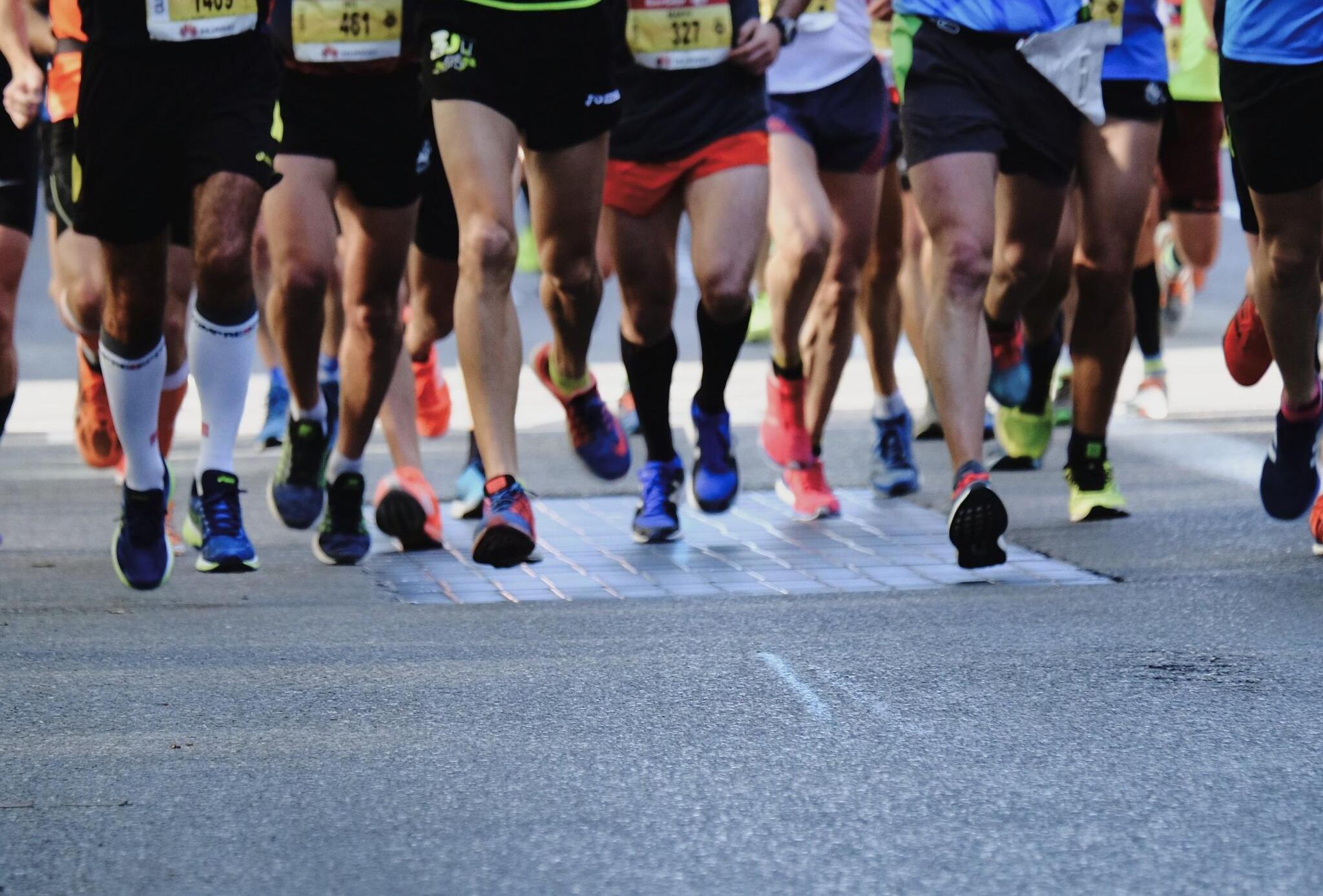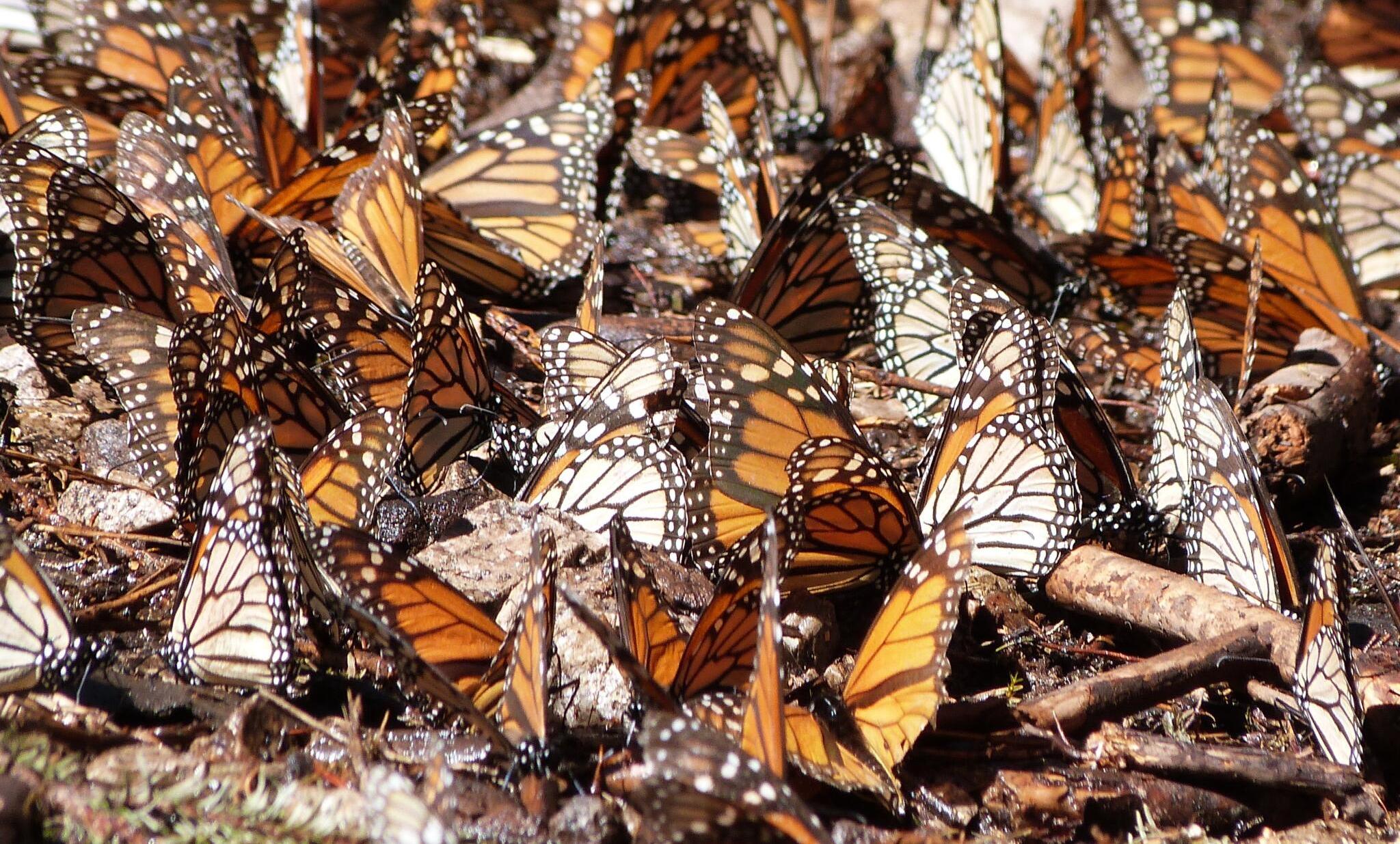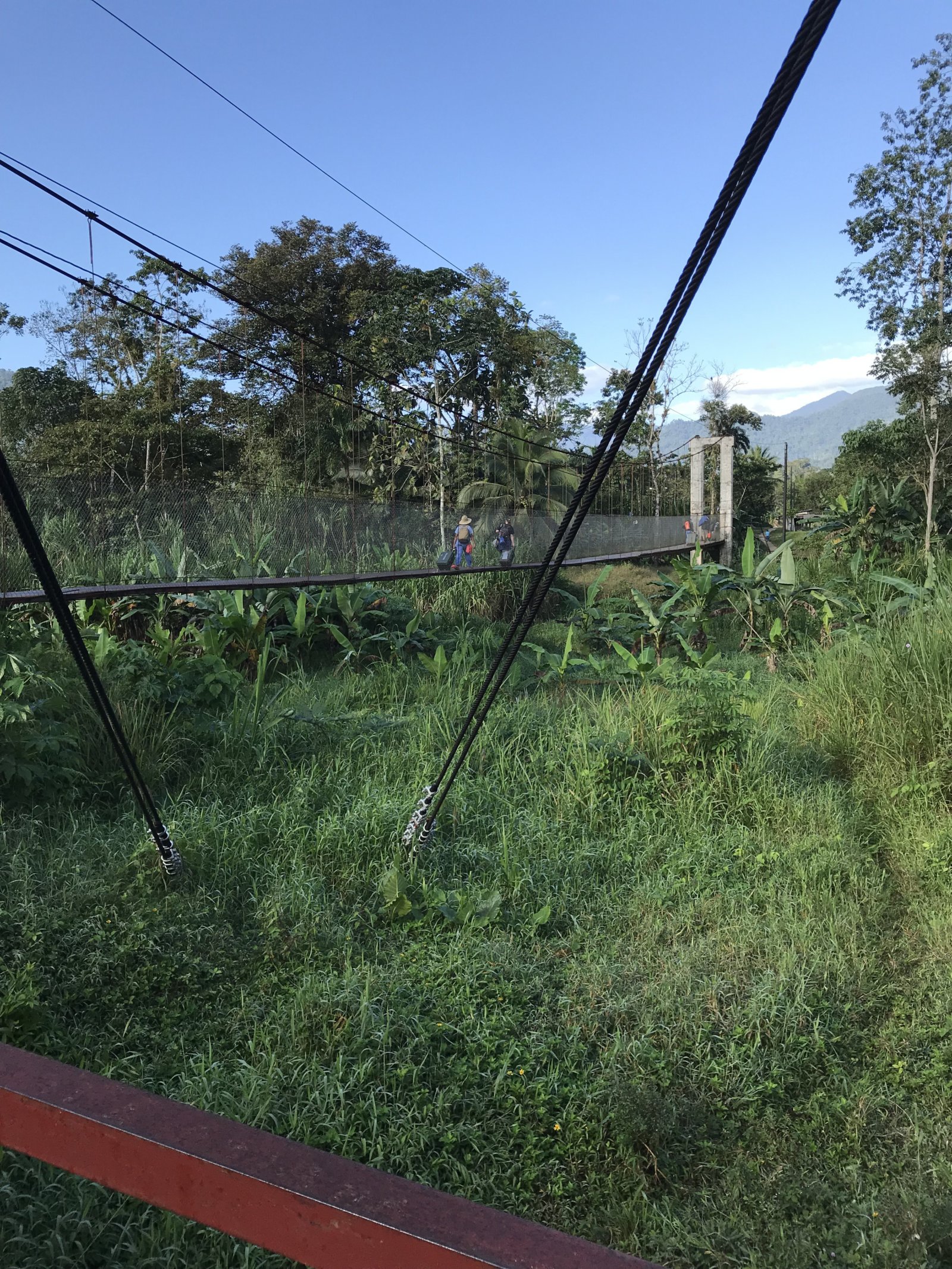After each hardship that has hit Puerto Rico in the past few years, the local community has rebuilt a culture more vibrant than ever before.
The woman sitting next to me leaned over to look out the airplane window at the ocean below. “Nosotros los puertorriqueños,” she said. “We come from the water.” Introducing herself as Diana, she told me she was returning to Puerto Rico for the first time since Hurricane Maria, the Category 5 storm that devastated the island in 2017. Some of her relatives had yet to rebuild their roofs, and Diana had come to lend a hand. The rest of the time? She’d be at the beach listening to Bad Bunny, Puerto Rico’s rising star of reggaeton, and eating bacalaítos, or cod fritters. If I was serious about finding out what island life was like, she said as we touched down, I should do the same.
In the hurricane’s wake, two narratives about the island have taken root. In one telling, Puerto Rico is slowly clambering back to normalcy, rebuilding homes and infrastructure and entire towns, still reeling from loss. In another, tragedy and disaster spurred community building and new ways of doing business, and the Puerto Rico that has emerged since is more vibrant and creative, clinging to joy more tightly than ever, having seen how quickly it can slip away. I’d come to find out which side of the story felt closest to the truth.
Sunlight blazed through the waves as they crested, capped in white, then crashed and spread foam across the pier. I was staying at the Caribe Hilton, which reopened last May after 15 months and more than $150 million of renovations to the 70-year-old structure, which sits on the northeastern edge of San Juan. During Maria, those waves had reached the hotel, drowning its landscaping in salt water, pulling beach chairs out to sea, and filling the pools with fish, crabs, and sand. But as I wandered the grounds, it was as if the hurricane had never happened. Guests lounged about in the windswept beachfront cabanas, in netted hammocks slung between palms, in the half-in, half-out lounge seats around the pools, while koi and swans swam laps in the shimmering pond and a peacock made its rounds.
Puerto Rico is a joyful place: a quality hard-won through the resistance of its people. In the streets of Old San Juan—where, just a month before my visit late last summer, hundreds of thousands of protesters had gathered to demand Governor Ricardo Rosselló’s resignation—flowers and bright vines hung from balconies. The breeze was warm and ocean-licked, and colonial architecture struck my eye in bright pastels. Patches of city walls shone with the gloss of touch-up paint, half-covering graffiti reading “4,645”—a number that has become a sort of political rallying cry. The official death toll after Hurricane Maria was declared, implausibly, to be just 64. A Harvard study put the number closer to 4,645. Since then, additional studies have placed the count around 3,000, but 4,645 has lodged itself in the public imagination as a symbol of the ills the island has long suffered at the hands of colonialism, corruption, and mismanagement.
I met Leslie Padró at Café Cuatro Sombras, a high-ceilinged place with an ivy-covered indoor courtyard. Padró moved to Puerto Rico from Atlanta 12 years ago in search of a slower rhythm. She had a passion for supporting local businesses, and, well, eating—interests that inspired her to found her food tour company, Flavors of San Juan. Café Cuatro Sombras used to grow its own coffee, Padró told me, but when the crop was lost to Maria, it started serving the best approximation: Colombian beans grown under the shade of orange trees. The coffee was rich and fruity, the perfect accompaniment to a croissant stuffed with provolone and Black Forest ham and slathered in sweet guava butter.
As we walked the Old Town, Padró explained that a history of inadequate government help had long ago taught business owners in Puerto Rico to rely on themselves and their community. After Maria, there was a San Juan message thread on WhatsApp. “It became a kind of bulletin board where shopkeepers and residents could talk about safety, water, power, and flooding to each other and to the authorities. The community was trying to get through a hardship together.” I asked what she has learned since moving to Puerto Rico. “You have to choose to be happy.”
Mofongo, I found, made me happy. The dish, which has roots in West Africa, features fried plantains, garlic, oil, and pork rinds, all mashed with a mortar and pestle and shaped into a dome. I enjoyed hearty mofongo at the artsy El Patio de Solé restaurant, in Santurce, and room-service mofongo stuffed with beef at the Caribe Hilton. My favorite was at the cozy Casita Miramar, where piles of the stuff encircled a small cluster of shrimp, and garlic oil soaked through every bite.
‘When people experience music together, and you share that over drinks, it’s medicinal.’
No matter what of the week it is, Puerto Ricans are out dancing. When it opened in 2013, La Factoría was credited with remaking San Juan’s cocktail culture, and seven years in it’s still packed most nights. The space has bars nested within bars. The first, with a checkerboard floor and velvety chairs, feels hip and upscale; down the hall, Latin trap music plays overhead, and with the peeling paint on the walls, the feel is thrillingly grungy; another hall leads to a salsa room; a little farther and you’re in a full-fledged nightclub. I was there on a Monday night. No matter—a 12-piece band was playing Puerto Rican salsa, and the diverse crowd of regulars and tourists gave it their all on the dance floor.
I was sitting with Pablo Rodríguez, one of the bar’s founders, drinking a Lavender Mule—a concoction of house-made ginger beer and lavender-infused syrup. As with so many conversations on the island, talk soon turned to Maria. Rodríguez told me that once people had gotten access to clean water and food, he saw it as his civic duty to reopen La Factoría, as a step toward normalcy: “When people experience music together, and you share that over drinks, it’s medicinal.” We went back to the live band to get some medicine. In the dark, pierced by colored lights, my arms went up, my hips swayed, and I lost myself.
I had plans to visit El Yunque, the 28,000-acre national forest about 30 miles from San Juan, but then, as can happen, our collective attention shifted to the weather. Hurricane Dorian was tearing an erratic path toward the island. Every TV screen I glanced at seemed to be flashing the same graphic—a neon-green swirl, red and yellow at its center, making its way across the sea. Puerto Ricans were advised not to panic, but businesses were shuttered, and everyone was out gathering supplies.
El Yunque, still on the mend after Maria shredded its canopy and damaged up to 60 percent of its tall trees, was closed because of the impending storm, so instead I ventured to the jungle just outside the park’s perimeter. There, the earth on the path glittered—gold dust, explained my guide, Guillermo Rodriguez. He showed me the rocks and clay the original people of Puerto Rico, the Taíno, used to mark their bodies; then we went to a waterfall and jumped into aquamarine water. The weather was sunny, the skies were clear. A storm seemed unimaginable.
As we dried off after our swim, I mentioned a story I’d heard a few days earlier outside the ruins of the colonial fort. I had met a tall forest guard named Norman Rutherford, who told me about the Puerto Rican parrot. There used to be around 200 cotorras—the only parrot species native to the island—living in El Yunque, he explained, but after Maria, biologists could account for only two. It had been Rutherford’s job to escort scientists into the jungle to search for surviving birds. He told me how he’d watched biologists place fake nests in the trees, trying to coax the pair to mate. But cotorras mate for life. If the two remaining parrots had lost their mates, what were the chances of rebuilding the population?
I asked Guillermo Rodriguez whether he had seen any parrots. He shook his head sadly. Perhaps they had flown to nearby islands, he said. As I stared into the sunlit foliage, he described the birds: emerald green, with a bright red forehead stripe, their eyes ringed in white. I imagined in that moment what it must have been like: the two parrots, finding perches in a ravaged forest, looking down at an unrecognizable place.
Back in San Juan, the news of Hurricane Dorian fluctuated—ominous one moment, nothing to fear the next. I went out to take in some art in Santurce, a hip neighborhood that was transforming from an auto-shop center to a gallery hub, but with the storm on the way, this cultural center was eerily deserted. I wandered along the quiet alleys, looking at the murals and street art that are hallmarks of that part of town.
I spent what felt like hours gawking up at a mural by Dominican artist Evaristo Angurria—on a wall painted black, two women, one blue-skinned, the other purple-skinned, embrace. It was beautiful—joyful. High up on a lamppost, a can of spray paint had been hung like a planter, sprouting with ivy. I watched an old man struggle with a 24-pack of bottled water. As he got close, I asked, “How far till you’re home? You need help?” He laughed and put the package down. “My wife, she gets so nervous.” He took out a handkerchief and blotted his brow. “And you?” I asked. He smiled. “Everyone gets nervous. It brings back everything that’s happened before.”
Condado Vanderbilt is tucked away in a ritzy area northwest of Santurce. Everything in the hotel, from its heavy curtains to its marble-floored lobby, speaks of old-world glamour. From my balcony, I could see the beach. The sand was blond and sun-kissed, but on the horizon, the skies were purple and bruised. While the reports wavered, I thought about what it meant to live on an island, an etching of high land surrounded by water.
San Juan’s culinary scene has been quietly exploding for years, but in the weeks and months after Maria, the chefs and restaurateurs of the city seemed to emerge even more impassioned than before. Since 2007, a generation of chefs who gained experience in overseas kitchens have been returning, creating new restaurants that draw on their global influences and Puerto Rican roots. Here, the farm-to-table movement is not only environmentally intended; it is an opportunity to create culinary and agricultural independence.
One of the most famed and early adopters was chef Jose Enrique, whose namesake San Juan restaurant has used locally grown foods, nurtured relationships with farmers, elevated traditional dishes to high cuisine, and done its best to divest from imports since the early days. Today, a number of San Juan restaurants engage in similar culinary ethics—Vianda, Jungle BaoBao, Verde Mesa, and Condado Vanderbilt’s own 1919 Restaurant, shepherded by chef Juan José Cuevas.
‘That’s the thinking with a lot of the farmers—we need to change the way we do things, because we need to be able to sustain ourselves and not rely on outside support.’
Cuevas spent years working at high-end restaurants around the world. During his time at New York City’s Blue Hill, he became the first Puerto Rican chef to run a Michelin-starred kitchen. When he returned to the island in 2012, he was surprised to find that some of San Juan’s fine-dining spots relied on canned ingredients. Cuevas works with farmers on updating their methods.
I asked whether he came to see food differently after Maria. “In terms of identity, no. In terms of the importance of self-sustenance, yes. That’s the thinking with a lot of the farmers—we need to change the way we do things because we need to be able to sustain ourselves and not rely on outside support.” Since Maria, Cuevas’s partners have made their farms more resilient, using hydroponics inside sheltered huts to ensure their harvests aren’t ruined by rain or harsh wind.
Agricultural investment and farm-to-table sourcing are admirable enough even if the kitchen is nothing to sing about, but it helps that the food at 1919 is damn near perfect. Cubes of frozen watermelon, somehow creamy, went undercover in what at first looked like a regular beet salad. Cod came wallowing in a green eddy of sauce and was capped with a delicate wing of fried yucca, making the whole dish look like it had been plucked out of the deep sea. By the end of it all, I felt like my soul had all but left my body.
Back in my room, I watched Dorian make its way across the sea. The horizon was a gradient of color—baby blue to black to baby blue again. My phone lit up with messages from everyone I’d met in my time in Puerto Rico. Did I have everything I needed? Did I need help? Was I worried? I felt taken care of. With the lights off, I watched the rain patter against the glass and thought of the parrots in El Yunque. I wondered if they’d found shelter, or at least each other.
Hurricane Dorian bypassed Puerto Rico that night and landed instead in the Bahamas, with winds reaching 185 mph. As I made my way to the airport, the sun was out and people were wandering the streets again.
I thought back to an encounter I’d had earlier in my trip, in the Parque de las Palomas in Old San Juan. I had been gazing out at the water and sucking on a paleta when an older gentleman walked up, propped one foot on the railing, and lit a cigarette. I nodded and greeted him. “Turisteando?” he asked. When I told him yes, he motioned for me to come over. He pointed down, where a street ran below the wall, and, as if sharing a secret, whispered, “Me too. That’s my car with the surfboard on top.”
The man said he was Puerto Rican, but considered himself a tourist. “The hurricane changed my life. I realized I’d never seen my own country—can you imagine, an old man like me?” He sold what little he had and, with savings, bought a car and a board, and set about traveling Puerto Rico. He swept his hand toward the waves below. “The ocean is eating the island in increments. It’s a force to be feared, but I love it.”
What did he think, then, of the effort to rebuild? Had he found a sense of peace? He told me: “I know that we have each other, and nothing lasts, except the ocean.”
San Juan and Beyond
Getting There and Around
San Juan is a major hub for airlines in the Caribbean. Within the city, it is easy to find taxis and Ubers. For those who want to go farther afield, renting a car at the airport is a cinch.
In the Capital
San Juan’s grandes dames emerged from Maria even more polished—and eager to welcome visitors.
Check in to the Caribe Hilton (doubles from $240), for easy access to Old San Juan, or the classic Condado Vanderbilt (doubles from $299), for many excellent bars and restaurants, especially the hotel’s Restaurant 1919 (prix fixe from $95). Heavy hitter Jose Enrique (entrées $15–$38) should not be missed; neither should La Factoría, the bar that kick-started San Juan’s craft cocktail scene.
At Cocina al Fondo (entrées $12–$20), chef Natalia Vallejo serves fresh takes on Puerto Rican cuisine. Within the tiki bar Jungle Bird, quirky Jungle Bao Bao is one of the most creative kitchens in town. Make time to stroll the muraled streets of Santurce, and stop at gallery Pública Espacio Cultural.
Outside the City
Set on 1,400 acres half an hour west of San Juan, Dorado Beach, a Ritz-Carlton Reserve (doubles from $849) is the ultimate seaside retreat. Go to Piñones to visit the kioscos near Vacía Talega beach—look for bacalaítos (cod fritters) and alcapurrias (fried plantains stuffed with crab or beef). Take a day trip to El Yunque, the U.S. National Forest system’s only tropical rain forest.
A version of this story first appeared in the June 2020 issue of GoTravelDaily under the headline That Island Spirit





